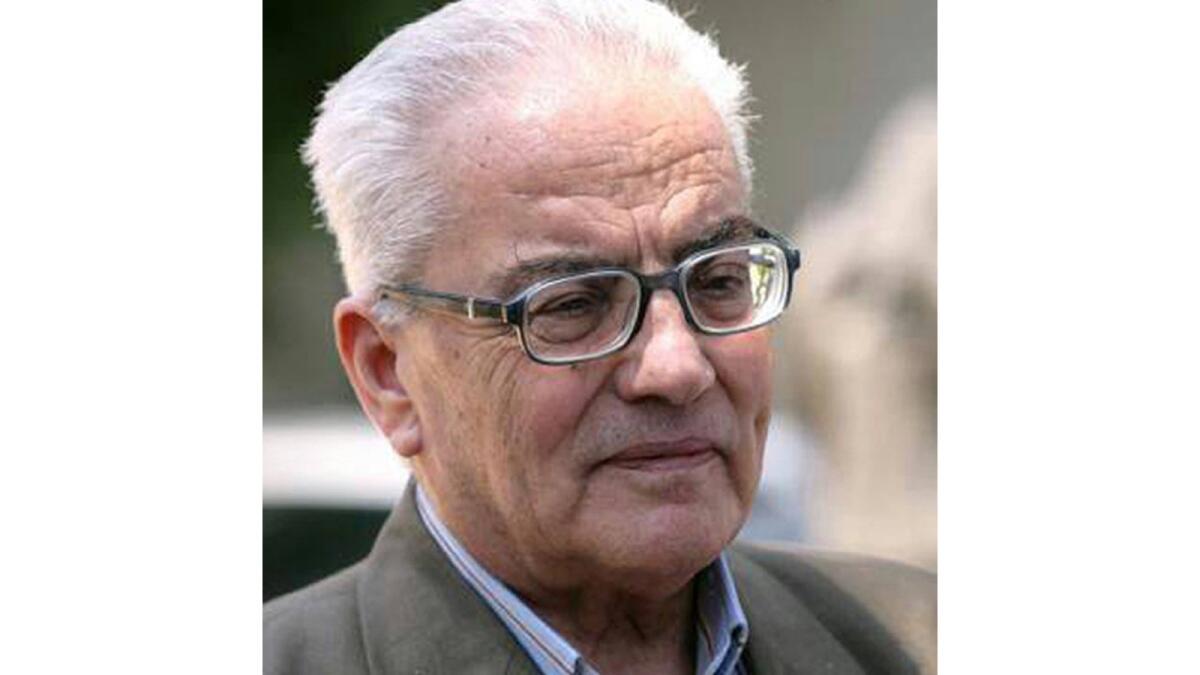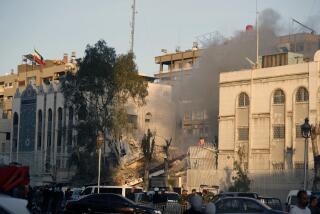What will become of Palmyra ruins after Islamic State killing of Syrian archaeologist?

Khaled Asaad, a longtime archaeologist in Palmyra, Syria, has been beheaded by Islamic State militants, reportedly for refusing to reveal where valuable artifacts had been hidden.
The news that a prominent Syrian scholar has been brutally murdered by Islamic State militants has hit the arts community hard -- and has been condemned by Syria’s antiquities chief, Maamoun Abdul Karim, as a “cowardly and criminal act of appalling brutality.”
But the beheading of the 82-year-old Khaled Asaad (reported by the Los Angeles Times early Wednesday), an archaeologist and researcher who for half a century has served as guardian of the exquisite ancient ruins at Palmyra, also demonstrates the great uncertainty facing the famed UNESCO World Heritage Site.
Asaad’s death is not a good omen for the future of this singular ancient city, an important Silk Road hub that bears Greco-Roman, Persian, Indian, Chinese and other influences -- some of which date back more than two millennia. Scholars around the world have been on edge about its future since May, when Islamic State militants invaded the area, killing hundreds of local residents. The militants are known as much for their violence against humans as for their destruction of historic sites -- from pre-Islamic pagan temples to Muslim shrines -- under the pretense that they are idolatrous.
SIGN UP for the free Essential Arts & Culture newsletter >>
While the militants largely left the ruins alone in the weeks following the invasion, by July, they had gotten around to destroying some of its statuary, including an important 2,000-year-old statue of a lion. At the time, UNESCO chief Irina Bokova described the destruction as being on an “industrial scale.”
But the city -- with its grand colonnade and its impressive Roman amphitheater -- has remained intact. Though, that may not be for much longer. The independent watchdog group Syrian Observatory for Human Rights has reported that militants have threaded the site with bombs and landmines.
If the ruins at Palmyra were to be destroyed, the loss wouldn’t just be a Syrian one. Palmyra was a place where East met West -- tied as much to Classical European civilizations as it was to the cultures of the Middle East and Asia. According to UNESCO, their destruction would be “an enormous loss to humanity.”
The death of Asaad, in the meantime, represents the silencing of one of the ruins’ most vaunted defenders. Asaad, who was born in Palmyra, had been director of the UNESCO heritage site for 50 years, from 1963 to 2003. Even after his retirement, he still worked as an expert with the antiquities and museum department.
Asaad had helped with the removal of many of the on-site museum’s greatest treasures in anticipation of the invasion by Islamic State, and some experts theorize that is why he was killed. One Syrian source told the Guardian that the archaeologist had been interrogated by militants for about a month before his murder, likely about the location of Palmyra’s treasures. But Asaad had refused to cooperate.
His death is a tremendous loss. Asaad was intimately identified with Palmyra -- having been responsible for some of its most significant finds, including an intact third-century mosaic depicting a battle between human beings and mythical animals. Moreover, he had written countless texts on the history of the site.
“It’s like you can’t talk about Egyptology without talking about Howard Carter,” one Syrian antiquities expert told the Guardian, in reference to the archaeologist who discovered Tutankhamun’s tomb. “You can’t write about Palmyra’s history or anything to do with Palmyrian work without mentioning Khaled Asaad.”
Asaad had refused to leave the city when Islamic State militants invaded this spring. As Abdul Karim recounted to the Daily Mail: “He told us, ‘I am from Palmyra and I will stay here even if they kill me.’”
Sadly, that has now come to pass.
Twitter: @cmonstah
MORE:
Art swap: That 50-cent thrift-store painting? It might be a Lorenzo Hurtado Segovia original
MoMA does Latin American architecture: the High-Low chat with Alexandra Lange
Artist Mark Steven Greenfield on minstrelsy and American culture
More to Read
The biggest entertainment stories
Get our big stories about Hollywood, film, television, music, arts, culture and more right in your inbox as soon as they publish.
You may occasionally receive promotional content from the Los Angeles Times.







